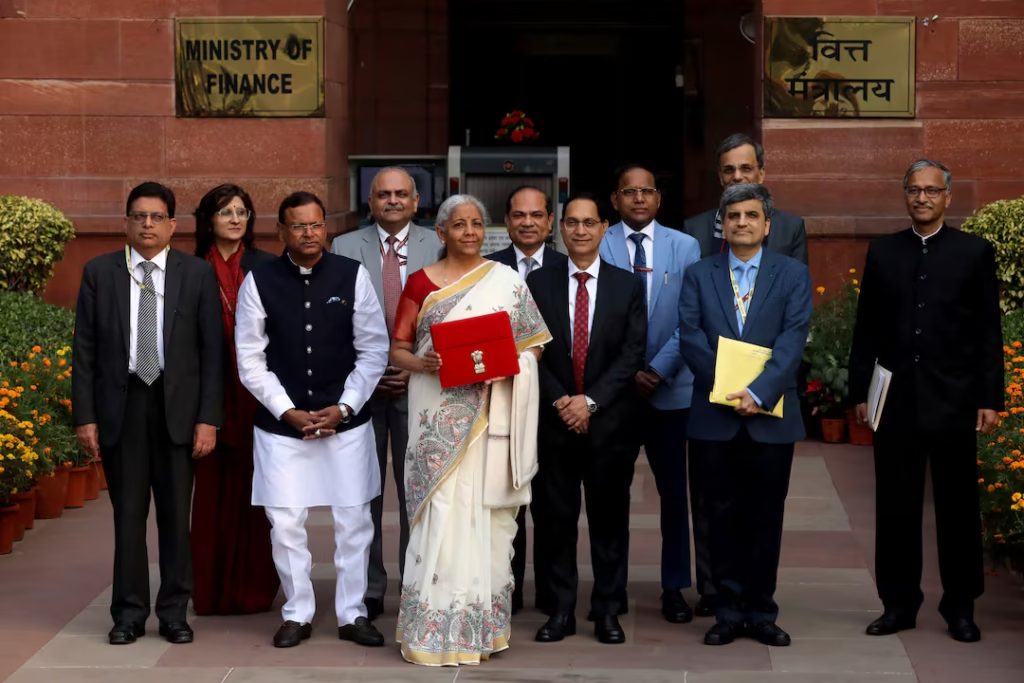

Budget Boost for India’s Middle Class, The Indian government has announced a series of budgetary measures aimed at providing relief and support to the middle class. This budget boost includes tax benefits, subsidies, housing incentives, and economic policies designed to ease financial burdens and promote economic growth. With rising inflation and increasing living costs, the middle class has been eagerly waiting for policies that enhance their financial security. The new budget aims to provide relief while also stimulating spending and investment, which in turn will drive economic progress.
1. Tax Relief and Lower Income Tax Rates
One of the most significant benefits for the middle class in this budget is the reduction in income tax rates and an increase in exemption limits. Lowering the tax burden allows individuals to retain more of their earnings, which improves their overall financial stability. Budget Boost for India’s Middle Class, The new budget proposes raising the basic exemption limit and adjusting tax slabs to ensure that middle-income earners pay less in direct taxes. This move is expected to increase disposable income, encouraging spending and investment in essential goods and services.
Budget Boost for India’s Middle Class for salaried individuals, standard deductions have also been revised to provide additional relief. By reducing the taxable income threshold, the government aims to reduce financial stress on households struggling with inflation and high living costs. Budget Boost for India’s Middle Class, With these changes, millions of middle-class families will have extra savings, which they can use for education, healthcare, or investment in assets like real estate and stocks.
2. Affordable Housing and Real Estate Incentives
The budget includes several provisions to make homeownership more accessible to middle-class families. The government has introduced subsidies and incentives for first-time homebuyers, reducing the burden of down payments and home loan interest rates. Budget Boost for India’s Middle Class, This initiative aligns with the “Housing for All” mission, which seeks to provide affordable housing to a larger section of the population.
In addition to homebuyer incentives, the real estate sector is set to benefit from reduced taxes on property transactions and increased investments in urban infrastructure. By improving roads, metro networks, and basic amenities, the government hopes to enhance the quality of life in urban areas. Budget Boost for India’s Middle Class, These measures not only support homebuyers but also boost the real estate market, creating jobs and stimulating the economy.
3. Subsidies on Essential Goods and Services
The budget introduces subsidies on essential goods such as food, fuel, and electricity to reduce the financial strain on middle-class households. Budget Boost for India’s Middle Class, Rising prices of basic commodities have made it difficult for families to manage their monthly expenses, and government support in this area provides much-needed relief. Lowering the cost of essential goods helps improve the purchasing power of middle-class consumers, allowing them to maintain a comfortable standard of living.
Additionally, the budget includes measures to control fuel prices, which directly impact transportation costs and household budgets. Budget Boost for India’s Middle Class, The government has allocated funds to stabilize fuel rates, ensuring that price fluctuations do not negatively affect middle-class earnings. By managing inflationary pressures on essential goods, these policies help maintain economic stability and support long-term financial planning.
4. Boost to Healthcare and Education
The middle class often struggles with rising costs of healthcare and education, two of the most critical expenses for families. In response, the budget has allocated significant funds to improve public healthcare infrastructure, increase insurance coverage, and subsidize medical treatments. Budget Boost for India’s Middle Class, The introduction of more affordable health insurance plans and government-funded medical schemes will ensure that middle-class families have access to quality healthcare without excessive financial burdens.
Education is another priority area, with increased spending on schools, universities, and skill development programs. The government aims to make higher education more accessible by providing scholarships and reducing interest rates on student loans. By improving the quality and affordability of education, the budget ensures that the middle class has better opportunities for upward mobility and professional growth.
5. Job Creation and Support for Small Businesses
The budget includes several initiatives to promote job creation and entrepreneurship, which directly benefit the middle class. The government has announced tax benefits and incentives for small businesses and startups, making it easier for entrepreneurs to establish and grow their ventures. By reducing regulatory hurdles and providing financial support, the government encourages innovation and economic development.
For salaried employees, the budget focuses on expanding employment opportunities in sectors such as manufacturing, technology, and services. Increased investment in infrastructure projects and digital transformation will generate more jobs, providing stability and career growth for middle-class workers. These measures aim to enhance income security and reduce unemployment rates, ensuring that middle-class families have stable financial prospects.
6. Investments in Digital Economy and Technology
Additionally, With India’s growing digital economy, the budget has prioritized investments in technology and internet accessibility. The government is working towards expanding digital infrastructure, improving connectivity, and making online services more affordable. These initiatives benefit middle-class professionals who rely on digital platforms for work, education, and financial transactions.
Additionally, digital payment systems and e-governance services are being strengthened to make financial transactions more efficient and transparent. By promoting digital inclusion, the budget ensures that the middle class can participate in the modern economy and benefit from new technological advancements. The focus on digital growth not only enhances convenience but also creates new job opportunities in the tech sector, providing long-term economic stability.
Conclusion
The budget boost for India’s middle class is a step towards improving financial security and economic prosperity. By reducing taxes, providing housing incentives, controlling inflation, and investing in healthcare, education, and job creation, the government aims to support middle-income families. These policies not only provide immediate relief but also create opportunities for long-term growth and financial stability. As these measures take effect, the middle class can expect greater financial freedom and improved quality of life in the years to come.
Buy Domin and Hosting with our trusted website
https://www.hostinger.in/
https://www.bluehost.com/
Visit our website
https://spotself.com/




Leave a Reply